|
|
Research Progress of Novel Two-dimensional Material MXene
ZHANG Jian-Feng, CAO Hui-Yang, WANG Hong-Bing
2017 Vol. 32 (6): 561–570
 Abstract
Abstract(
4621 )
 HTML
HTML(
131)
 PDF
PDF(560KB)(
5947
)
MXene is a new family of two-dimensional transition metal carbides or carbonitrides with graphene-like 2D morphology. The chemical formula of MXene is Mn+1XnTz, where M is an early transition metal, X is C and/or N, T stands for surface-terminating functional groups like F-, OH-, O2-, etc., and n = 1, 2, or 3. It can be achieved by selective etching of the A element from the MAX phases, and HF is an etchant mostly used. First-principles calculations about MXene have been performed to reveal the structure and properties. MXene has also been found to have a unique two-dimensional layered structure, large specific surface area and good electrical conductivity, stability, magnetic and mechanical properties, and thus it is promising in many fields, including energy storage, catalysis and adsorption. This article reviews the quite recent progress of MXene based on theoretical and experimental considerations, especially its structure, synthesis, and applications. Finally, the suggestions about existing challenges and future developments are proposed. MXene is expected to be used for more various applications with further extensive research.
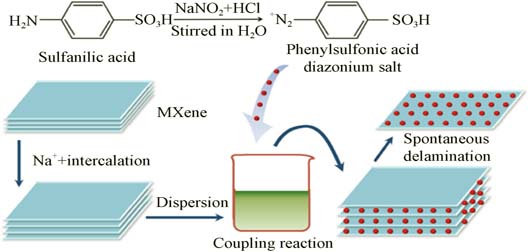
|
|
|
Research Progresses of Atmospheric Plasma Sprayed Splat
LI Da-Chuan, ZHAO Hua-Yu, ZHONG Xing-Hua, TAO Shun-Yan
2017 Vol. 32 (6): 571–580
 Abstract
Abstract(
952 )
 HTML
HTML(
13)
 PDF
PDF(705KB)(
1316
)
Atmospheric plasma spraying (APS) is a well-established method to fabricate coatings. Since the coatings are piled up with splat, the morphology of splats is of significant importance for the microstructure and performance of coatings deposited by APS. In the current review, the influences of parameters in spraying processes on formation of splats were divided into three categories, namely the droplet-related factors, substrate-related factors and environmental-related factors. The influence of above mentioned factors on morphology of splats were systematically introduced. Among them, effect of powder size and substrates preheating were emphatically discussed. Future research direction was also pointed out based on the reviewed literature in this paper.
|
|
|
Fabrication of Hollow TiO2 Spheres and Their Effect on Thermal Insulation Property of Polyacrylate Film
BAO Yan, KANG Qiao-Ling
2017 Vol. 32 (6): 581–586
 Abstract
Abstract(
830 )
 HTML
HTML(
9)
 PDF
PDF(522KB)(
1301
)
Hollow TiO2 microspheres were fabricated with PS as template, tetrabutyl titanate as titanium resource and ammonium as catalyst. Then, hollow TiO2 microspheres were introduced into polyacrylate emulsion by physical blending method. The effect of hollow size and dosage of hollow TiO2 microspheres on light reflection, thermal conductivity and mechanical property of composite film were investigated. The results show that hollow TiO2 microspheres can significantly improve the properties of polyacrylate film. The hollow size and dosage of hollow TiO2 microspheres have different degree influence on properties of composite film. The properties of composite film firstly increase and then decrease with increasing of hollow size and dosage of hollow TiO2 microspheres. When the hollow diameter and the dosage of hollow TiO2 microspheres is 300 nm and 1%, respectively, the thermal insulation properties and mechanical properties of the composite membrane are optimal.
|
|
|
Controlled Preparation and Thermal Conductivity of Highly Oriented Graphite Blocks
YUAN Guan-Ming, XUE Zheng, CUI Zheng-Wei, DONG Zhi-Jun, LI Xuan-Ke, ZHANG Zhong-Wei, WANG Jun-Shan
2017 Vol. 32 (6): 587–595
 Abstract
Abstract(
860 )
 HTML
HTML(
8)
 PDF
PDF(718KB)(
1296
)
Using cheap and available natural flake graphite with high crystallinity and mesophase pitch as raw materials, graphite block materials with high bulk density, highly preferred orientation and high thermal conductivity, were prepared by a hot-press molding at mild temperatures and subsequent carbonization and graphitization treatments at high temperatures. XRD, SEM and PLM analyses indicate that the prepared graphite block has a highly preferred structural orientation, the graphitic layers of the graphite flakes inside are clearly oriented perpendicular to the hot-pressing direction. The components of various sized flake graphite and different types of pitch binders, and the proportions of raw materials, as well as the preparation process parameters (including hot-pressing temperature and pressure, heat treatment temperature, etc.), have great influences on the room-temperature in-plane thermal conductivity of the resultant graphite blocks. Graphitized blocks prepared from 86wt% NG (+32 mesh) and 14wt% AR mesophase pitch through hot-pressed at 500℃ at a fixed pressure of 10 MPa for 5 h and subsequently underwent 1000℃ carbonization and 2800℃ graphitization, have a good comprehensive thermophysical property. Their bulk density reaches above 1.91 g/m3, and room-temperature in-plane thermal conductivity is measured as high as 550 W/(m·K), and improved to 620 W/(m·K) after 3000℃ graphitization treatment.
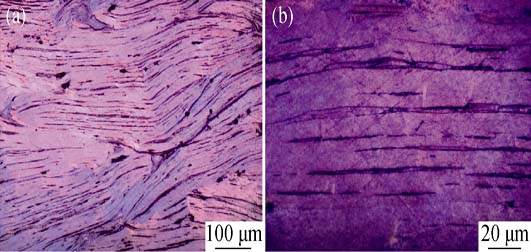
|
|
|
AFM Investigation of Solid Electrolyte Interphase on HOPG Anode in Sodium Ion Battery
WANG Shu-Wei, HU He-Feng, WANG De-Yu, SHEN Cai
2017 Vol. 32 (6): 596–602
 Abstract
Abstract(
1030 )
 HTML
HTML(
14)
 PDF
PDF(555KB)(
1533
)
Chemical and morphological structures of solid electrolyte interphase (SEI) play a vital role in sodium-ion battery (NIB). Up to date, SEI remains the least understood component in NIB due to its trace presence, delicate chemical nature, heterogeneity in morphology, elusive formation mechanism, and lack of reliable in situ quantitative characterization tools. SEI morphological evolution during the first cyclic voltammetry and the thickness of SEI after first discharging-charging cycle on highly oriented pyrolytic graphite (HOPG) surface were investigated by using in situ electrochemical atomic force microscopy (EC-AFM). Complemented by an ex situ XPS analysis, the differences in interfacial features and fundamental constitution of SEI formation in ethylene carbonate (EC) and fluoroethylene carbonate (FEC)-based electrolytes on HOPG electrode surface were revealed. In 1 mol/L NaClO4/EC/DMC electrolyte, dense films were formed at the step edges, while thinner films were observed on the basal plane. In 1 mol/L NaClO4/EC/DMC electrolyte, stable films with doubled layer structures were formed on HOPG electrode after initial electrochemical cycling. The upper layer was composed of large particles, which was soft and easy to be scrapped off by AFM tip while the under layer was composed of dense small particles.

|
|
|
Preparation and Characterization of γ-NaxCoO2 by Sodium Polyacrylate Gel Method
LI Xiao-Yu, ZHANG Li, TANG Xin-Feng, ZHANG Qing-Jie
2017 Vol. 32 (6): 603–608
 Abstract
Abstract(
619 )
 HTML
HTML(
1)
 PDF
PDF(568KB)(
1019
)
Chemical synthesis method of sodium polyacrylate (PAAS) gel method was used to prepare γ-NaxCoO2 powders. The effects of PAAS/Co2+ molar ratio, concentration of raw materials and calcination temperatures on the phase composition and microstructure of product were studied. NaxCoO2 polycrystalline samples with different Na+ concentrations were synthesized by the above method, and the thermoelectric properties were characterized. The results showed that the PAAS/Co2+ molar ratio greatly affected the phase composition. With the increase of PAAS/Co2+ molar ratio, the phase composition of sample was transformed from Co3O4 to γ-NaxCoO2. The proper molar ratio of PAAS/Co2+ to obtain γ-NaxCoO2 single phase is 0.8. the phase composition of sample will change slightly with different concentrations of raw materials. γ-NaxCoO2 single phase was formed at low concentration of raw materials (below 0.025 mol/L), however, when the concentration exceeded 0.025 mol/L, the second phase was formed. The formation of γ-NaxCoO2 single phase was promoted with the increase of calcination temperature. The γ-NaxCoO2 powders calcined at 800℃ were plate-like particles with about 200 nm in thickness and about 1-4 μm in width along the plane direction. With the increase of Na content in samples, σ value and S value were increased while κ value was decreased, leading to a significant increase in ZT value.
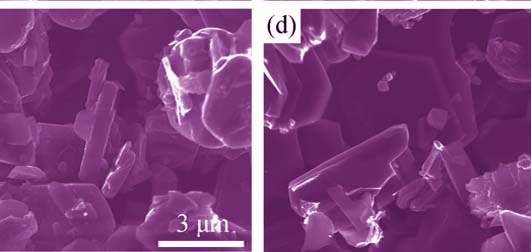
|
|
|
Structure and Magnetic Property of Fe and Mn Doped Spinel Co2MnO4
MENG Fan-Bin, MA Xiao-Fan, ZHANG Wei, WU Guang-Heng, ZHANG Yu-Jie
2017 Vol. 32 (6): 609–614
 Abstract
Abstract(
791 )
 HTML
HTML(
10)
 PDF
PDF(472KB)(
1531
)
Spinel solid solution Co2-xMn1+xO4 and Co2-xFexMnO4 were synthesized by Sol-Gel method using metal nitrates and citric acid as the starting materials. Crystalline phases, structure and magnetic properties of the Co2MnO4 doped with different concentrations of Fe and Mn were investigated by XRD、FT-IR and PPMS, respectively. Results show that Co2-xMn1+xO4 series are single-phase cubic spinel structure at x<0.6, the lattice parameter as well as the saturation magnetization are found to be increasing with the Mn content increasing. Co2-xMn1+xO4 series transform to tetragonal structure gradually at x≥0.6, which result in the decline of magnetic properties and difficulty of reaching saturation. Co2-xFexMnO4 samples have cubic spinel structure at x<1.75, the lattice parameter and magnetic increase with the increase of Fe-substitution. When the Fe content increases to 1.75, Fe2O3 phase is formed in the sample. The changes of performance are mainly due to the larger atom radius of the doping atoms (Fe or Mn) as compared to that of Co. And magnetic moment is another important factor to the performance change. The first-principles calculation results show that the magnetic moments of Fe and Mn are larger than that of Co. As a result, the interatomic magnetic interaction is enhanced by doping.
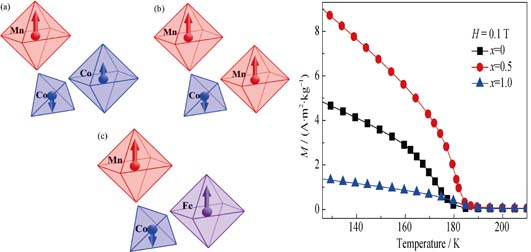
|
|
|
Raw-material Pre-milling on Physical Property of BaTiO3 Piezoelectric Ceramics
SUN Dan-Dan, ZHANG Jia-Liang, WU Yan-Qing, ZHANG Zhong-Qiu, LIU Da-Kang
2017 Vol. 32 (6): 615–620
 Abstract
Abstract(
719 )
 HTML
HTML(
7)
 PDF
PDF(641KB)(
1261
)
BaCO3 powder usually consists of large rod-shaped particles, which can not be easily broken up into fine ones when ball-milled together with TiO2 powder. This may lead to chemical compositional non-uniformity and large particle sizes of the subsequently synthesized BaTiO3 powder through the calcination and the secondary ball-milling procedure, and may eventually affect the microstructure and the piezoelectric properties of resultant BaTiO3 ceramics. Effects of the pre-milling treatment of BaCO3 powder on physical properties of the resultant BaTiO3 ceramics prepared by conventional solid-state reaction were investigated. The results show that an additional ball-milling treatment of BaCO3 powder before being mixed with TiO2 powder can remarkably reduce the size of the rod-like particles, which is an effective way to get good-quality BaTiO3 fine powder. In such a way, a series of small-grained dense BaTiO3 ceramics are fabricated with significantly high piezoelectric coefficient d33. The BaTiO3 ceramics were prepared with the BaCO3 powders ball-milled for different time before mixing with raw TiO2 powder. Physical properties of the resultant BaTiO3ceramics, including piezoelectric properties, dielectric properties, ferroelectric properties, and microstructure were investigated. A much enhanced d33 value of 470 pC/N was achieved for the BaTiO3 ceramics prepared with the BaCO3 powders ball-milled for 8 h, in comparison to the maximum value of 410 pC/N for those BaTiO3 ceramics prepared with un-ball-milled BaCO3 powders.
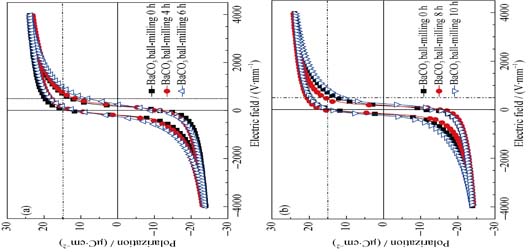
|
|
|
Growth and Property of In:Ga2O3 Oxide Semiconductor Single Crystal
TANG Hui-Li, WU Qing-Hui, LUO Ping, WANG Qing-Guo, XU Jun
2017 Vol. 32 (6): 621–624
 Abstract
Abstract(
678 )
 HTML
HTML(
10)
 PDF
PDF(448KB)(
1357
)
β-Ga2O3 crystal is a novel oxide semiconductor with wide bandgap, but its intrinsic conductive capability is poor. Ion doping is an effective way to regulate conductivity, transparency and crystallinity of the crystal. Transparent blue In:Ga2O3 single crystal with the dimension ofφ8 mm×50 mm was grown by optical floating zone method. The as-grown crystal is of good crystallization quality. After doping In3+ ion, β-Ga2O3 crystal has strong infrared absorption, and its thermal conductivity slightly decreases. At room temperature, the electrical conductivity and carrier concentration of as-grown In:Ga2O3 crystal are 4.94×10-4 S/cm and 1.005×1016 cm-3, respectively, which are approximately one order magnitude higher than that of undoped β-Ga2O3 crystal. The electrical property of In:Ga2O3 crystal is sensitive to heat treatment. After annealing at 1200℃ in air or in argon, its electrical conductivity decreases. These experimental results suggest that In3+ ion doping can improve the electrical property of β-Ga2O3 single crystal.
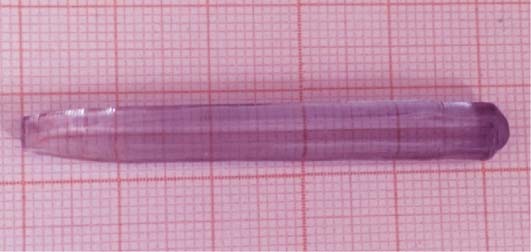
|
|
|
Tribological Performance and Lubrication Mechanism of Carbon Microspheres as Oil-based Lubricant Additive on Aluminum Alloy Substrate
GU Yu-Kang, CAO Lei, WAN Yong, GAO Jian-Guo
2017 Vol. 32 (6): 625–630
 Abstract
Abstract(
584 )
 HTML
HTML(
4)
 PDF
PDF(456KB)(
992
)
A one-step green hydrothermal method was used to prepare carbon microspheres with size of 400-500 nm by using glucose as the precursor compound. Morphologies and chemical properties of the carbon microspheres were characterized by means of SEM and FTIR. Their tribological properties as the lubricant additive were evaluated on aluminum-steel sliding contact by using a multi-functional friction and wear tester. The lubrication mechanism was also discussed. The results indicate that the carbon microspheres possess good friction-reducing and antiwear performance when they are used as the lubricant additive in both liquid paraffin and 0W-40 engine oil on aluminum-on-steel pairs. Carbon microspheres may enter the contact region and prevent the direct contact of the friction pair. At the same time, they may play a role as micro-nanospheres between the sliding contacts to provide an excellent lubricating effect.
|
|
|
Preparation, Characterization and Catalytic Performance of Supported Titanium Silicalite-1 Zeolite Membrane Catalyst
GUO Yu, LI Dong-Xin, WU Hong-Mei, JIN Yu-Jia, ZHOU Li-Dai, CHEN Qiang-Qiang
2017 Vol. 32 (6): 631–636
 Abstract
Abstract(
810 )
 HTML
HTML(
7)
 PDF
PDF(533KB)(
1100
)
Titanium silicalite-1(TS-1) zeolite membranes were successfully prepared on porous α-Al2O3 tubes using hydrothermal synthesis method for epoxidation of propylene to propylene oxide (PO). SEM, XRD, FT-IR, and UV-vis spectroscopy were used to investigate the effects of Ti/Si molar ratio on surface morphology and structure of the TS-1 zeolite membrane. When the Ti/Si molar ratio was set between 0.01 and 0.04, continuous and compact TS-1 zeolite membranes were deposited on the porous support. The obtained TS-1 membranes displayed typical characteristics diffraction peaks of MFI structure. With the increase of the Ti/Si molar ratio, the deposition amounts of the TS-1 zeolites decreased. As a result, some intercrystalline defects were formed and the propylene permeance increased. For the TS-1 membranes prepared with the Ti/Si molar ratio of 0.03-0.04, poor PO selectivity and low PO formation rate were observed in the epoxidation reaction of propylene. This was attributed to the formation of extra-framework TiO2 in the TS-1 membranes that could catalyze the decomposition of hydrogen peroxide. In contrast, the TS-1 membrane prepared with the Ti/Si ratio of 0.02 exhibited the best catalytic performance. The conversion of hydrogen peroxide, PO selectivity and PO formation rate were 12.43%, 95.80% and 15.78 mmol/(h·g), respectively. Moreover, the regeneration tests revealed that the catalytic ability of the TS-1 membrane was relatively stable after regeneration for 8 times. And the TS-1 membrane was easier to be separated and recovered after reaction.
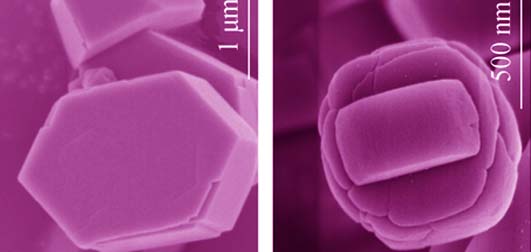
|
|
|
High-efficient Synthesis and Photocatalytic Properties of Ag/AgBr/TiO2 Monolithic Photocatalysts Using Sodium Alginate as Substrate
TONG Qin, DONG Ya-Mei, YAN Liang, HE Dan-Nong
2017 Vol. 32 (6): 637–642
 Abstract
Abstract(
790 )
 HTML
HTML(
5)
 PDF
PDF(505KB)(
1176
)
SA-Ag/AgBr/TiO2 monolithic photocatalysts with uniform particle size distribution was synthesized by using sodium alginate as a substrate. Its structure and morphology were characterized by XRD, XPS, SEM, TEM, and HRTEM. The optical properties and the surface area of the SA-Ag/AgBr/TiO2 monolithic photocatalysts were characterized by FT-IR and BET. The as-prepared photocatalyst with good stability exhibited enhanced photocatalytic performance for degradation of RhB solution under both UV and visible light. The SA-Ag/AgBr/TiO2 monolithic photocatalyst with 12wt% Ag/AgBr/TiO2 display optimum properties i.e. about 100% degradation rate for the RhB solution for 60 min under UV irradiation and 54.1% degradation rate for the RhB solution under visible light irradiation for 120 min. Besides, after 5 cycles, the RhB degradation rate still keeps higher than 96%, showing an excellent reusability of the photocatalysts. The as-prepared SA-Ag/ AgBr/TiO2 monolithic photocatalysts may effectively solve the problems including photocatalytic activity, secondary pollution and photocatalyst recycling.
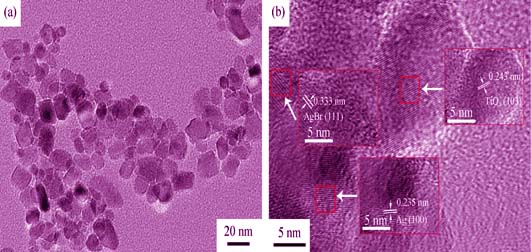
|
|
|
Effect of Rare Earth Dopant on Thermal Stability and Structure of ZnO-B2O3-SiO2 Glass
WANG Mi-Tang, FANG Long, LI Mei, LIU Zhao-Gang, HU Yan-Hong, ZHANG Xiao-Wei
2017 Vol. 32 (6): 643–648
 Abstract
Abstract(
696 )
 HTML
HTML(
7)
 PDF
PDF(385KB)(
1434
)
To investigate the effect of the lanthanides and non-lanthanides elements on the thermal stability and structure of ZnO-B2O3-SiO2 glass, the crystallization behavior, thermal stability and structural changes of ZnO-B2O3-SiO2 glass doped with La2O3 and Y2O3 were characterized by the differential scanning calorimetry (DSC) and Fourier Transform Infrared spectroscope (FTIR). The results showed that when the La2O3 and Y2O3 additions are more than 8mol% and 6mol%, respectively, the 60ZnO-30B2O3-10SiO2 glass system begins to crystallize. When La2O3 and Y2O3 additions are 4mol% and 2mol%, respectively, this glass is of the best thermal stability. According to the structure research, the network linking performance of this kind of glass can be improved by a small amount addition of rare earth oxide. In contrast, the network linking performance of this kind of glass can be decreased by rare earth oxide’s addition exceeding a certain threshold value.
|
|
|
Evaluation of Vascularization of Porous Calcium Phosphate by Chick Chorioallantoic Membrane Model ex vivo
XIAO Wen, LIU Yu-Mei, REN Kai-Ge, SHI Feng, LI Yan, ZHI Wei, WENG Jie, QU Shu-Xin
2017 Vol. 32 (6): 649–654
 Abstract
Abstract(
696 )
 HTML
HTML(
4)
 PDF
PDF(507KB)(
1816
)
In this study, ex vivo chick chorioallantoic membrane (CAM) model with abundant blood vessels was developed to investigate the vascularization of porous calcium phosphate. Porous hydroxyapatite ceramic (HA) and calcium phosphate cement with segmental porous structure (CPCs) were implanted into CAM, respectively. Stereomicroscope and scanning electron microscope (SEM) were employed to observe the angiogenesis on the surface of CPCs. The vascular density, diameters and numbers were quantified by Image-Pro Plus and Nano Measurer. Furthermore, undecalcified histological staining was conducted to observe the inner angiogenesis of porous HA. The vascular density and number in the porous part of CPCs both increased significantly with the increase of culture time, while the angiogenesis was tardily in the part of CPCs without pores. Most of the blood vessels less than 50 μm on the porous part of CPCs grew in budding manner to form vascular network. SEM images showed that blood vessels grew tightly on the surface of CPCs. Histological staining demonstrated that some blood vessels grew into the inside of porous HA. These results suggest that three-dimensional porous structure may promote the angiogenesis of porous calcium phosphate and the present CAM model may provide a convenient, efficient and with low-cost approach to evaluate vascularization of porous biomaterials.
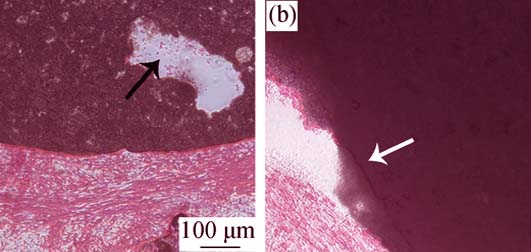
|
|
|
Construction of Gelatin Microsphere / Magnesium Phosphate Bone Cement Composite Drug Sustained Delivery System
YU Su-Chun, YU Ying, DAI Hong-Lian
2017 Vol. 32 (6): 655–660
 Abstract
Abstract(
802 )
 HTML
HTML(
20)
 PDF
PDF(505KB)(
1335
)
Emulsification crosslinking method was applied to prepare drug-loaded gelatin microspheres, of which the particle size was mainly between 100-300 μm. The influence of the crosslinking agent content, drug content and rotation speed on the drug-loading rate and encapsulation efficiency and the influence of the drug content and rotation speed on the microspheres’ diameter were analyzed. The drug-loaded gelatin microspheres were deliberately combined with magnesium phosphate cement to produce porous magnesium phosphate composite bone cement with drug slow-release property, and then the changes of porosity of the composite system in the process of microsphere degradation and the drug release characteristics of the composite system in vitro were both explored. Results show that with the increase of glucose concentration, both the drug-loading rate and encapsulation efficiency increase firstly and then decrease, while both the drug content and the drug-loading rate increase and the encapsulation efficiency increases firstly and then decreases. Both the drug-loading rate and encapsulation efficiency decrease with the increase of rotation speed. Comprehensive analysis show that the gelatin microspheres with high drug-loading rate and suitable diameter can be obtained under the condition of rotation speed of 400 r/min, glucose concentration of 0.5 g/mL and the mass ratio of drug to gelatin of 1:2. The drug release characteristics in vitro were studied by immersing the magnesium phosphate cement, which was combined with different proportions of drug-loaded microspheres, into the Tris-HCl buffer solution. Results show that in the early releasing stage of 1-10 h, the drug release rate is rapid and then it obviously slows down. After being released for 7 d, microspheres almost degraded completely and the drug release ratio reaches 60%-89%. Drug slow-release property is achieved to some extent.
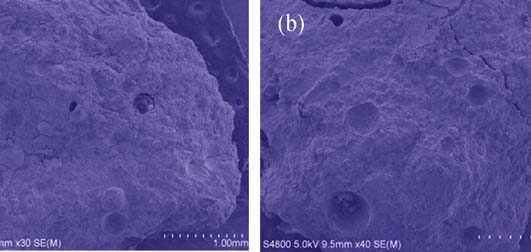
|
|
|
Tuning Bismuth Activator Valence in Calcium Halophosphate Solid Solution by Controlling Activator Site
ZHANG Qing-Fu, LI Chen, SONG Zhi-Guo, LI Yong-Jin, QIU Jian-Bei, YANG Zheng-Wen
2017 Vol. 32 (6): 661–666
 Abstract
Abstract(
558 )
 HTML
HTML(
3)
 PDF
PDF(399KB)(
790
)
Effect of halide ions on valence state and luminescence property of Bi ions in calcium halophosphates was investigated. Bi-activated fluorapatite-chlorapatite solid solutions were synthesized by a solid state reaction. The content ratio between Bi2+ and Bi3+ ions in the crystals could be tuned rationally by the component ratio of F-/Cl-, and the absent emission of Bi2+ ion occur when halide ions are all occupied by Cl- ions. The origin of this change is because the Ca2 site of calcium halophosphate is split into Ca(2)a and Ca(2)b sites for F- and Cl- as the nearest neighbors, and the Ca(2)a is adopted to offer activator site that enables Bi3+ to be self-reduced. The results in this study can provide a scientific reference for controlling the valence state of Bi ions in crystals.
|
|
|
Preparation and Immobilization of Ti-based Oxides by Detonation Method
YAN Hong-Hao, ZHAO Tie-Jun, LI Xiao-Jie, WU Lin-Song
2017 Vol. 32 (6): 667–672
 Abstract
Abstract(
450 )
 HTML
HTML(
1)
 PDF
PDF(405KB)(
806
)
Ti-doped gel, prepared by hydrolysis of tetrabutyl titanate and ammonium nitrate solution, was mixed with hexogen to make mix explosive. The mix explosive was detonated in a closed kettle in cylindrical charge with presence of aluminum plate, and then Ti-based oxides were fabricated. The samples were characterized by XRD, TEM, EDX, and SEM. The results showed that samples contained FeTiO3, a few of rutile, anatase, and Al2O3. The Ti-based oxides particles were spherical in micrometer level scale. Ti-based oxides were successfully immobilized on an aluminum plate driven by Ti-contained detonation wave, and the size of particles on the plate was 10 μm. The present results suggest that the detonation method provides an easy way to prepare Ti-based oxides and fabricate particle-plate structure for recycling materials synchronously.
|
|